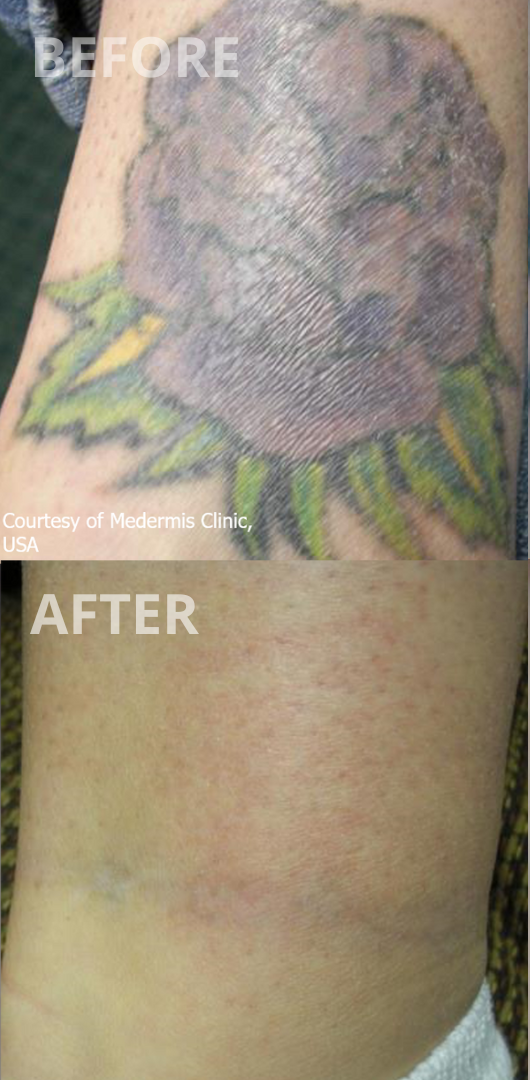Is the allure of a fresh start strong enough to endure a sometimes lengthy and often costly process? The journey of tattoo removal, a commitment marked by patience and perseverance, offers the chance to rewrite the narrative etched onto the skin, a process that has become increasingly accessible and sophisticated in recent years.
The desire to erase a permanent mark, whether fueled by changing tastes, professional aspirations, or simply a desire for a blank canvas, is a powerful motivator. The landscape of tattoo removal has transformed significantly. Gone are the days of rudimentary methods, replaced by advanced laser technologies that target tattoo ink with precision. One of the most prominent laser technologies, the PicoSure laser, is a favorite for tattoo removal due to its ability to deliver rapid pulses of energy, shattering ink particles into smaller fragments that the body can then eliminate naturally. Other laser systems, like those using Q-switched technology, are also frequently used, each with its own specific advantages depending on the tattoo's characteristics, such as the ink colors used and the depth of the ink within the skin. The experience, as many who have undergone it can attest, involves a series of sessions, each designed to break down the tattoo ink gradually. The number of sessions required varies, influenced by factors like the tattoo's size, color, and age. Each session typically involves a short recovery period, during which the treated area needs gentle care to promote healing and minimize the risk of complications.
To provide further insight, let's look at some of the key elements and considerations surrounding tattoo removal.
| Aspect | Details | Notes |
|---|---|---|
| Methods of Tattoo Removal |
|
Laser is generally preferred due to its effectiveness and lower risk of scarring compared to other methods. Results vary depending on tattoo characteristics and individual skin. |
| Laser Tattoo Removal Process |
|
Each session can last from a few minutes to an hour, depending on the size of the tattoo. Sessions are typically spaced several weeks apart. |
| Factors Affecting Removal |
|
Consultation with a specialist is crucial to assess these factors. |
| Side Effects and Risks |
|
Following aftercare instructions is crucial to minimize risks. |
| Cost |
|
Costs can vary greatly by location and clinic. |
The subreddit r/Tattooremoval serves as a valuable online hub for those navigating this process. It's a space where individuals share their journeys, offer support, and provide insights into the realities of laser tattoo removal. The posts within this community reflect the diverse experiences of people undergoing the process, with before-and-after pictures vividly illustrating the gradual fading of ink. Discussions often revolve around the number of sessions needed, the specific laser technologies used, and the challenges encountered along the way. One should always bear in mind that, as the subreddit's moderators emphasize, the information shared is for support and informational purposes, and that professional medical advice should always be sought.
The photos themselves, meticulously cataloged and shared, highlight the transformations over time. The gradual lightening of the tattoo is the most apparent feature in many posts. The use of lasers causes the ink particles to fragment and be naturally processed by the body. Depending on a variety of factors, which include the age of the tattoo, the colors used, and the skin's response, this process can take months or even years. The images reveal the ebb and flow of progress, the slow but persistent reduction in ink density that signals the eventual fading of the unwanted design.
The stages of healing following a laser session are also prominently featured in the shared experiences. In the immediate aftermath, the treated area may show redness and swelling. Blistering and scabbing are also common as the body begins to break down the ink particles. Following the aftercare instructions is crucial to prevent complications and support the healing process. This includes keeping the area clean, applying prescribed ointments, and protecting it from the sun. The long-term results can vary significantly. While the aim is to achieve complete removal, some tattoos may fade but not fully disappear.
The range of factors impacting tattoo removal is also evident. The dark inks often respond more rapidly to laser treatment than lighter colors. The age of the tattoo plays a role, with older tattoos often proving easier to remove. Skin type can also affect the outcome, with lighter skin tones often yielding the best results. This means, of course, that results differ from person to person.
Several clinics showcase their before-and-after images to illustrate the outcomes of their treatments. These visual testimonials often emphasize the dramatic changes that can occur. While a complete overview of the possibilities of tattoo removal is a complex topic, it can be said that the advancements in laser technology have made the prospect of erasing unwanted ink a reality for many people.
The process is not just about the physical removal of ink, but also the emotional journey. The experiences shared in online communities underscore the emotional aspects of tattoo removal, from the initial decision to the highs and lows of the removal process. Seeking support from the community can be as beneficial as seeking professional help.
Understanding the process, the expectations, and the commitment required is key. While the journey may be time-consuming, the transformation can be a profoundly liberating one. The gradual disappearance of the tattoo can symbolize a shedding of the past, a reclaiming of the skin, and an embracing of new possibilities.

.png)